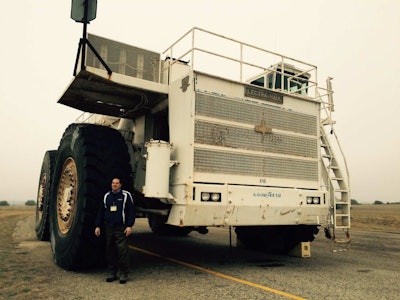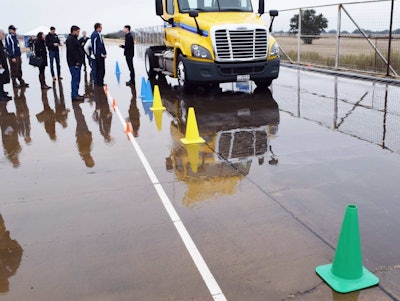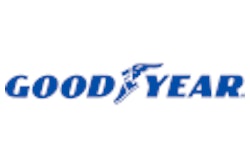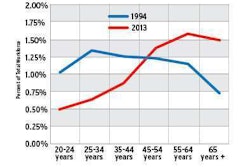“Welcome to West Texas. There’s stuff here that wants to kill you.”
With that, Chris Queen easily had the attention of the trucking journalists and fleet customers visiting the Goodyear Proving Grounds last week. Queen heads the facility, sprawling over 7,000 acres in the mesquite-and-cactus flatlands around San Angelo, Texas.
He explained that if it were a hot summer day, we might well encounter rattlers, black widows, brown recluses or scorpions on our various stops. The closest we came to any of those on this frigid March day was a framed snake skin displayed in the foyer.
But even without the threat of venomous critters, the proving grounds is a fascinating place, at least for those who like to push equipment to the limit and meticulously measure the results. Queen here gives a brief overview of what the facility does:
Much of the testing involves comparisons with competing products. Any single test gets many repeats so that averages will compensate for slight variations, such as the exact moment when a driver brakes.
Here are three test examples and one curiosity Queen’s team showed our group:
 Trucking journalist David Kohlman stands by the M200 tires, which are almost 13 feet tall and weigh 12,000 pounds.
Trucking journalist David Kohlman stands by the M200 tires, which are almost 13 feet tall and weigh 12,000 pounds.Gigantic tires. Got $75,000 to spare? If so, you could buy one of these monster tires, the biggest Goodyear makes. The bigger ones, on the rear, have 63-inch rims. The vehicle is a Lectra Haul M200, typically used in mining. The M200 has a 200-ton payload capacity. Fully loaded, it weighs about 750,000 pounds — almost 10 times the weight of a fully loaded tractor-trailer. Goodyear uses this modified model strictly for testing.
Duraseal demonstration. A truck with a Goodyear steer and a competitor’s steer rolled onto three 3-inch nails, then backed up. Soapy water sprayed on the competitor’s tire produced plenty of bubbles as the air rushed out. The Goodyear tire, equipped with Duraseal, showed no air escaping.
 The blue cones in the rear represent where Goodyear-equipped tractors stopped, ahead of cones marking where trucks with competitors’ tires stopped.
The blue cones in the rear represent where Goodyear-equipped tractors stopped, ahead of cones marking where trucks with competitors’ tires stopped.Wet track brake testing. Using one tractor equipped with Goodyear products and another equipped with competitors’ comparable tires, we saw each ABS-equipped truck make three stops on wet pavement. The Goodyear tires won the match each time.
Coast-down test for rolling resistance. Drivers of the Goodyear and competitor-tire truck, both at 80,000 pounds, reached 52 mph and at the same point shifted into neutral. The competitor truck went first, which is why the video shows it stopped as the Goodyear truck passes it at 18 mph, stopping many yards away. Company officials said that prior trials, with multiple runs using SAE Type II testing, showed trucks with Goodyear Fuel Max tires coasting distances that were 5 percent or more further than trucks equipped with other comparable tires.










